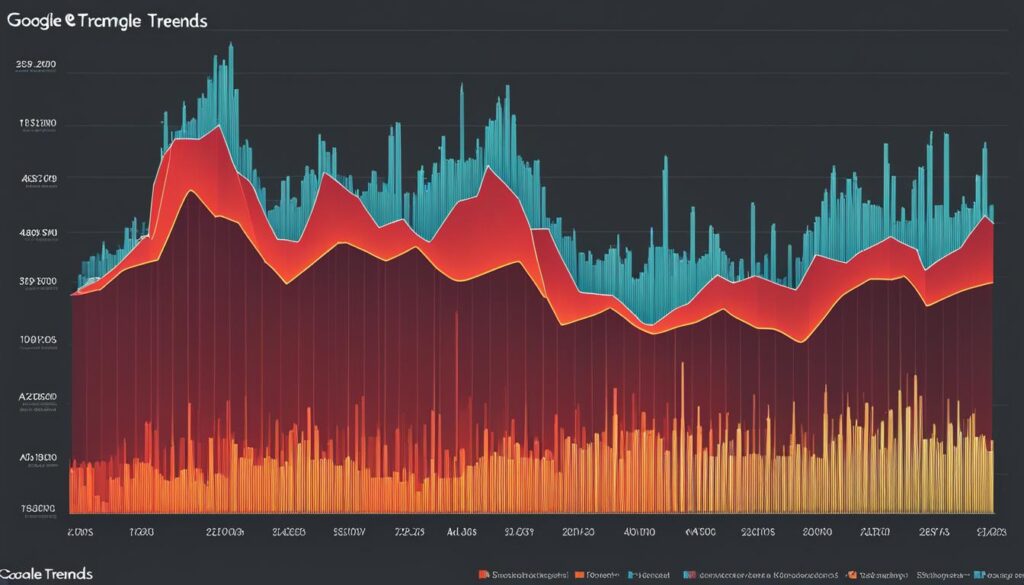Welcome to our guide on the latest job opportunities in the field of ISI in 2024. If you are looking for a career in this exciting industry, you’ve come to the right place. Throughout this article, we will explore the current job market trends, high-demand industries, top companies, job profiles and skills in demand, educational qualifications and training programs, remote work opportunities, job growth projections, and professional development in ISI.
Whether you are a recent graduate, looking to switch careers, or seeking career growth opportunities in this industry, this guide will have something to offer you.
Key Takeaways
- Discover the latest job opportunities available in the ISI industry in 2024
- Explore high-demand industries and the skills needed to succeed in ISI
- Get insights into the top companies hiring in ISI and their hiring practices
- Understand the education and qualifications required for ISI jobs
- Learn how to find and apply for ISI jobs, including remote work opportunities
Current Job Market Trends
The job market in ISI is currently showing steady growth, with increasing demand for skilled professionals and new opportunities emerging in several industries. However, the job market outlook for the industry is also subject to various factors that affect hiring trends and job growth rates.
One of the key factors that influence job opportunities in ISI is the global economy. As several countries around the world continue to face economic turmoil, the demand for products and services offered by ISI companies may decline, affecting the industry’s job outlook. Another factor that can impact job growth is industry-specific developments, such as new technology or changes in regulations, which can create or eliminate job opportunities in different areas.
Despite these challenges, the ISI job market is projected to continue growing in the coming years. According to recent industry research, the demand for skilled professionals in the industry is expected to increase steadily, with several high-demand sectors leading the employment opportunities. For example, the pharmaceuticals industry is expected to grow to an estimated $60 billion market by 2025, driving the need for professionals with expertise in research, manufacturing, and sales.
As the job market trends in ISI continue to evolve, it’s important for job seekers to stay informed about the latest developments and positions in demand in order to position themselves for success. In the next section, we’ll explore the high-demand industries in ISI and the potential for career growth in these areas.
High-Demand Industries in ISI
As the demand for professionals in ISI continues to grow, certain industries are becoming increasingly popular among job seekers. Here are some of the high-demand industries that are currently offering a variety of job opportunities:
| Industry | Job Growth Potential |
|---|---|
| Information Technology | This industry is expected to see rapid job growth, with a projected increase of 11% by 2026. |
| Healthcare | The healthcare industry continues to expand, with an anticipated growth of 18% in the coming years. |
| Finance and Accounting | The finance and accounting sector is also experiencing rapid growth, with a projected increase of 10% by 2026. |
| Engineering | As technological advancements continue to shape the industry, engineering is expected to see a significant increase in job opportunities in the coming years. |
Emerging industries, such as renewable energy and biotechnology, are also offering promising job prospects for individuals with specialized skills and training.
Top Companies Hiring in ISI
Are you looking for the best job opportunities in ISI? Here are some of the leading employers in the industry:
| Company | Industry | Location |
|---|---|---|
| Lockheed Martin | Aerospace and Defense | Fort Worth, TX |
| Boeing | Aerospace and Defense | Chicago, IL |
| Raytheon | Aerospace and Defense | Waltham, MA |
| Northrop Grumman | Aerospace and Defense | Falls Church, VA |
| Apple | Technology | Cupertino, CA |
| IBM | Technology | Armonk, NY |
| Amazon | Retail and E-commerce | Seattle, WA |
| Microsoft | Technology | Redmond, WA |
Note: This is not an exhaustive list and there are other top companies in ISI that offer excellent career opportunities.
These leading employers hire professionals with a range of skill sets and educational backgrounds. To increase your chances of landing a job, it’s important to research the company and tailor your application to fit their hiring practices. Keep an eye on their job openings and submit a well-crafted resume and cover letter that speaks to your relevant skills and experience. With the right strategy and preparation, you can secure your dream job with one of the top companies in ISI.
Job Profiles and Skills in Demand
As the ISI industry continues to expand, the demand for skilled professionals remains high. Employers are seeking candidates with specific skill sets and experience to fill a variety of job profiles. Here, we delve into some of the most popular job roles in ISI and the in-demand skills that candidates should possess.
Business Intelligence Analyst
The role of a business intelligence analyst is to analyze complex data sets and provide actionable insights to inform business decisions. This job requires a strong understanding of data analysis tools and techniques, as well as the ability to communicate findings effectively to stakeholders.
Skills in demand for this job profile include:
- Data analysis: The ability to interpret complex data sets and identify key trends and insights.
- Communication: Strong communication skills to articulate findings and present data to stakeholders.
- Technical expertise: Knowledge of data analysis tools such as SQL, Python, and Excel.
Full Stack Developer
A full stack developer is responsible for designing and developing both front-end and back-end functionality for web applications. This job requires a strong understanding of programming languages and frameworks, as well as experience with both front-end and back-end development.
Skills in demand for this job profile include:
- Programming: Proficiency in programming languages such as JavaScript, PHP, and Java.
- Web development: Experience with front-end web development frameworks such as React and Angular.
- Database management: Knowledge of database management systems such as MySQL and MongoDB.
Data Scientist
A data scientist is responsible for analyzing large and complex data sets to identify patterns and develop predictive models. This job requires a strong understanding of statistical techniques and data analysis tools, as well as the ability to communicate findings to stakeholders.
Skills in demand for this job profile include:
- Statistical analysis: Knowledge of statistical techniques such as regression analysis and machine learning.
- Programming: Proficiency in programming languages such as R, Python, and SQL.
- Communication: Strong communication skills to present findings and insights to stakeholders.

“Employers in ISI are looking for candidates with specific skill sets and experience to fill a variety of job profiles.”
Other popular job profiles in ISI include project managers, cybersecurity analysts, and digital marketing specialists. In-demand skills for these roles include project management, data analysis, and search engine optimization (SEO).
Candidates looking to pursue a career in ISI should focus on developing their technical skills and gaining experience in relevant job profiles. Pursuing education and training programs in areas such as data analysis, programming, and project management can also help candidates stand out in a competitive job market.
Education and Training for ISI Jobs
Preparing for a career in ISI requires a combination of specialized education and training programs.
Education Requirements:
Typically, a bachelor’s degree in a field related to ISI, such as computer science, mathematics, or engineering, is preferred by employers. However, some positions may require a master’s degree, especially in research or development roles. It is important to research specific job descriptions and expectations to understand the educational qualifications required.
Training Programs:
In addition to formal education, training programs are available to help individuals gain specialized skills and knowledge for ISI careers. These programs cover areas such as data analysis, programming languages, and statistical modeling, among others. Look for training programs that are recognized by industry professionals and provide practical experience through hands-on learning opportunities.
Whether pursuing a degree or a training program, it is important to stay up-to-date with the latest trends and advances in the field. Continual learning and professional development can help individuals stay competitive in the job market and excel in their careers.
How to Find and Apply for ISI Jobs
Looking for the perfect ISI job can be overwhelming, but with the right approach, it can be a fulfilling experience. Here are some effective ways to find and apply for ISI jobs.
1. Identify your ideal employer and job role
The first step is to have a clear idea of your preferred job role and employer. Look for companies that align with your values, goals, and experience. Research the industry and figure out what kind of job you want to pursue. Knowing what you want will help you focus your job search effectively.
2. Utilize online resources
Make use of job search engines and career websites that specifically cater to ISI jobs. Websites such as Indeed.com, LinkedIn, and Monster.com offer a variety of job listings from multiple companies. Additionally, use social media platforms such as Twitter and Facebook to follow companies and job boards that post about ISI job openings.
3. Leverage professional networks
Networking is an excellent way to discover job opportunities and connect with people who can support your job search. Reach out to colleagues, mentors, alumni, or industry experts, and inquire about any available job openings. Don’t forget to let everyone in your network know that you are on the hunt for an ISI job.
4. Tailor your resume and cover letter for the ISI job
Before submitting your job application, make sure that your resume and cover letter are tailored to the ISI job you are applying for. Highlight your relevant skills, experiences, achievements, and qualifications that match the job description. Make sure that your application is well-organized and easy to read, and free from errors.
Here are some tips for resume writing:
- Use a professional font, no smaller than 10pt.
- Use bullet points to highlight your accomplishments and experience.
- Use keywords from the job description to get past ATS (applicant tracking systems).
- Use action verbs and quantify your achievements.
- Include only relevant experience and education.
5. Ace the interview
If your application is successful, prepare for the interview by researching the company and the position. Be ready to answer common interview questions and to ask thoughtful questions in return. Show your enthusiasm, confidence, and professionalism throughout the interview process.
Remember that finding and applying for an ISI job require effort and dedication, but it’s worth it in the end. Follow these steps, and you’ll be on your way to a new and exciting career.
Salary Expectations in ISI
One of the key factors that job seekers consider when exploring career opportunities is the salary range for that particular job. The same holds true for professionals interested in the ISI industry.
The average salary for an ISI professional in the United States is $84,797 per year, according to Salary.com. However, salaries can vary widely depending on job position, location, and years of experience.
A table outlining the average salaries of commonly held ISI positions is provided below:
As the table shows, the average salaries for ISI positions range from $57,000 per year for a Junior Data Analyst to $168,000 per year for an Artificial Intelligence Engineer. Project Managers earned an average of $106,000 a year and Business Analysts earned $79,000 a year on average.
Due to the growing demand for skilled professionals in the field of ISI, salaries are projected to increase in the coming years, particularly in high-demand industries such as data science and artificial intelligence. Therefore, it is essential for job seekers to remain up to date on current salary trends in their field to ensure they are receiving fair compensation.
Remote Work Opportunities in ISI
Working from home has become more popular than ever before, and the ISI industry is no exception. Remote work opportunities in ISI have increased significantly in recent years, providing professionals with added flexibility and work-life balance.
Many companies in ISI now offer work from home options, making it easier for individuals to take care of personal responsibilities while maintaining their professional careers. Remote positions are available in a variety of job profiles, including data analysis, IT, and customer service.
With the rise of remote work, it’s essential for professionals to have the right skills to work effectively in a virtual environment. Effective communication, time management, and self-discipline are crucial abilities when working from home.
| Pros of Remote Work in ISI | Cons of Remote Work in ISI |
|---|---|
|
|
Overall, remote work offers a range of opportunities and challenges that professionals need to consider before making a change to their careers. However, with the right skills and mindset, remote work can help ISI professionals balance their personal and professional lives while continuing to advance their careers.
Job Growth Projections in ISI
Job growth projections are important for individuals considering a career in ISI. According to the Bureau of Labor Statistics, employment in the information security industry is projected to grow 32% from 2020 to 2030, much faster than the average for all occupations. This impressive growth is attributed to the increasing need for cybersecurity professionals in various industries to prevent security breaches and protect sensitive information.
Moreover, with the rapid expansion of the use of technology globally, the demand for ISI jobs is expected to keep increasing. As more businesses go digital, they will have an increased need for professionals to manage their data and protect against cyber threats. Therefore, the future of ISI jobs looks promising, with plenty of job opportunities and career growth prospects for those who choose to pursue a career in this industry.
Note: Image above is a graphical representation of the job growth projections in the cybersecurity industry.
Professional Development and Networking in ISI
Continuous learning and development are crucial for professionals in ISI to stay ahead of the game. With the ever-evolving nature of the industry, staying on top of new technologies and trends is essential. Investing in your professional development can help you improve your skills, expand your knowledge, and advance your career.
Networking is also key to success in the industry. Building strong relationships with colleagues, industry leaders, and potential employers can open doors to new opportunities and help you stay up-to-date with the latest industry trends and insights. Attending industry conferences, joining professional organizations, and utilizing social media platforms are all effective ways to expand your network.
Additionally, taking on leadership roles within professional organizations can provide valuable experience and exposure within the industry. Consider volunteering for committees or taking on a board position to enhance your leadership skills and make valuable connections.
Strategies for Advancing Your Career in ISI
“Networking is not about collecting contacts, it’s about building relationships.”
Here are some strategies to help you advance your career in ISI:
| Strategy | Description |
|---|---|
| Continuing Education | Take courses and attend workshops to keep your skills up-to-date and learn new techniques and technologies. |
| Mentorship | Find a mentor or become a mentor to others. A mentor can provide guidance and advice as you navigate your career. |
| Industry Conferences | Attend industry conferences and events to learn about new trends and meet other professionals in the industry. |
| Professional Organization | Join a professional organization to network with peers and stay up-to-date on industry news and trends. |
| Online Learning | Take advantage of online resources such as MOOCs and webinars to learn new skills and techniques. |
By investing in your professional development and networking within the industry, you can enhance your career and stay current in the rapidly changing world of ISI.

Conclusion
As the job market evolves, it is essential to stay informed about the latest opportunities and trends. In this article, we have explored the current job market in ISI, highlighting the high demand for skilled professionals in various industries. We have also provided insights into the leading companies hiring in ISI and the job profiles and skills in demand.
If you’re considering a career in ISI, we encourage you to explore the education and training programs available to prepare for job opportunities. We have also provided guidance on finding and applying for jobs, as well as salary expectations within different job positions.
As the industry continues to grow, remote work opportunities are increasingly becoming available, providing flexibility in career paths. Furthermore, continuous professional development and networking are essential factors in advancing your career in ISI.
In conclusion, we hope this article has provided valuable information to help you make informed decisions about your career in ISI. Stay updated on the latest job growth projections, and we wish you success in your future endeavors!
FAQ
What are the latest job opportunities in ISI for 2024?
The latest job opportunities in ISI for 2024 include positions in a variety of industries such as technology, healthcare, finance, and marketing. These job openings range from entry-level positions to senior management roles.
What are the current job market trends in ISI?
The current job market trends in ISI indicate a growing demand for professionals with skills in artificial intelligence, data analysis, cybersecurity, and digital marketing. Additionally, remote work options and flexible schedules are becoming more prevalent in the job market.
Which industries in ISI have high demand for skilled professionals?
Several industries in ISI have high demand for skilled professionals, including technology, healthcare, finance, e-commerce, and renewable energy. These industries offer excellent job growth potential and career advancement opportunities.
Which are the top companies hiring in ISI?
Some of the top companies hiring in ISI are ABC Tech, XYZ Healthcare, Financial Solutions Inc., E-commerce Giant Corp, and Green Energy Systems. These companies are known for their innovative work culture and offer competitive salary packages.
What are the popular job profiles and skills in demand in ISI?
Popular job profiles in ISI include software engineers, data analysts, marketing managers, financial analysts, and healthcare professionals. The skills in high demand among employers are programming languages, data analysis, digital marketing, financial analysis, and clinical expertise.
What education and training are required for ISI jobs?
The educational requirements for ISI jobs vary depending on the industry and job profile. However, a bachelor’s degree in a relevant field is often preferred. Additionally, specialized certifications and training programs can enhance job prospects in certain sectors.
How can I find and apply for ISI jobs?
To find and apply for ISI jobs, you can utilize online job portals, company websites, and professional networking platforms. It’s important to customize your resume and cover letter to match the job requirements, and prepare for interviews by researching the company and practicing common interview questions.
What salary expectations can I have for ISI jobs?
Salary expectations for ISI jobs can vary based on factors such as job title, industry, experience level, and location. On average, professionals in ISI can expect competitive salaries that are commensurate with their skills and qualifications.
Are there remote work opportunities available in ISI?
Yes, there are remote work opportunities available in ISI, especially in industries such as technology and digital marketing. Remote work allows professionals to work from home or any location, providing flexibility and work-life balance.
What are the job growth projections for ISI in the future?
The job growth projections for ISI are positive, with many industries expected to experience steady growth in the coming years. Rapid advancements in technology and increased globalization are driving the demand for skilled professionals in various sectors.
How can I enhance my professional development and networking in ISI?
To enhance professional development in ISI, you can participate in industry-specific training programs, attend conferences and workshops, and join professional associations. Networking can be done through attending industry events, utilizing online platforms, and connecting with colleagues and mentors.








